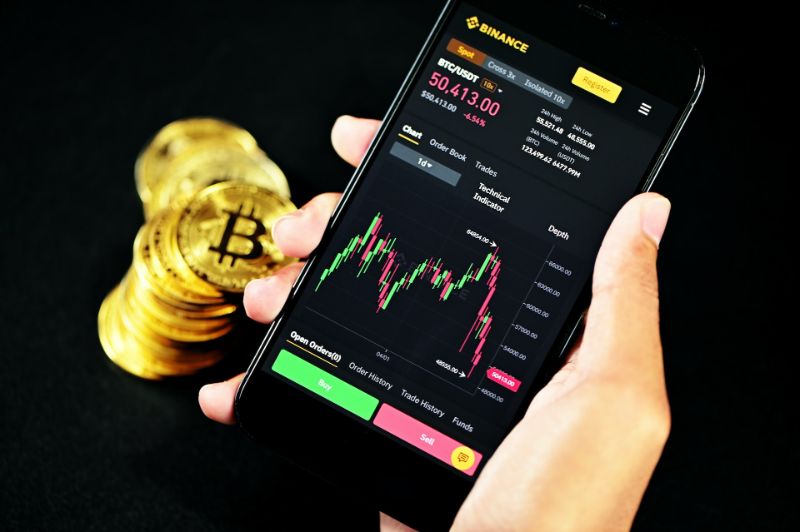It is a digital medium of exchange that uses strong cryptography to secure transactions, control the creation of additional units and verify the transfer of assets using distributed log technologies. Cryptocurrencies are a type of alternative currency or digital currency. There is controversy as to whether cryptocurrencies have to be decentralized controlled or centralized currencies by central banks or other entities, leaving these entities and/or central banks with no role at all. It could be the case that it could be massively adopted and become a fiat currency for the entire planet. Cryptocurrencies generally use decentralized control rather than a central bank digital currency (CBDC).
In 1983, American cryptographer David Chaum conceived an electronic cryptographic monetary system called eCash. Later, in 1995, he implemented DigiCash, which used cryptography to make money transactions anonymous, albeit with centralized issuance and settlement (payment). This system required software to withdraw money from a bank and designate specific encrypted keys before it could be sent to a recipient. This allowed the digital currency to be untraceable by the issuing bank, the government, or any third party.

In 1996, the NSA published research entitled How to make a Mint: the Cryptography of Anonymous Electronic Cash. This research described a cryptocurrency system, published on an MIT mailing list.
The concept or idea of cryptocurrency was first described by Wei Dai, in 1998, when he proposed the idea of creating a new type of decentralized money using cryptography as a means of control, The first cryptocurrency to be created was Bitcoin, created in 2009 by the pseudonymous developer Satoshi Nakamoto, which uses the SHA-2 cryptographic function set (exactly SHA-256) as its PoW (proof of work) scheme.
Subsequently, other cryptocurrencies have appeared, such as Namecoin (an attempt to decentralize the DNS domain name system, which would make internet censorship very difficult), Litecoin (which uses scrypt as a PoW scheme, as well as, to have a faster transaction confirmation), Peercoin (which uses a hybrid PoW/PoS [proof of work/proof of stake] scheme, plus it has an inflation rate of around 1 %).
How do cryptocurrencies work?
Cryptocurrencies have a few qualities that separate them from customary frameworks: they are not managed or constrained by any foundation and don’t need go-betweens in exchanges. A decentralized data set, blockchain, or shared bookkeeping record, is utilized to control these exchanges.
Concerning, digital currencies are not viewed as a method for installment, are not supported by a national bank or other public specialists, and are not covered by client security systems, for example, the Store Assurance Asset or the Financial backer Assurance Asset.
Concerning the activity of these computerized monetary standards, it is vital to recall that once the exchange with cryptographic forms of money is made, that is to say, when the computerized resource is traded, it is unimaginable to expect to drop the activity on the grounds that the blockchain is a library that doesn’t permit information to be erased. To “invert” an exchange executing the contrary one is essential.
How many types of digital wallets are there?
A digital purse or wallet is a software or application where it is possible to store, send and receive cryptocurrencies. The truth is that, unlike a physical money purse, what is stored in digital wallets are the keys that give us ownership and rights over the cryptocurrencies and allow us to operate with them. In other words, it is enough to know the keys to be able to transfer the cryptocurrencies, and the loss or theft of the keys can mean the loss of the cryptocurrencies, with no possibility of recovering them.
There are two types of wallets: hot and cold. The difference between the two is that the former is connected to the Internet, and the latter is not. Thus, within the hot wallets there are web wallets, mobile wallets, and desktop wallets, the latter only if the computer is connected to the Internet. On the other hand, within the cold wallets, there are hardware wallets and paper wallets, which are simply the printing of the private key on paper.
How is the value of a cryptocurrency determined?
The value of cryptocurrencies varies according to supply, demand, and user commitment. This value is formed in the absence of effective mechanisms to prevent manipulation, such as those present in regulated securities markets. In many cases, prices are also formed without public information to support them. We recommend you read this statement from the Bank of Spain and the National Securities Market Commission (CNMV) on the risks of buying cryptocurrencies.
Mining cryptocurrencies

This concept refers to the process necessary to validate the operations carried out through this type of digital asset. For example, if we take the practical case of a bitcoin currency: its mining would be based on the validation and recording of transactions in the blockchain registry.
In short, mining cryptocurrencies involves successfully solving the mathematical problems involved. Miners who have carried it out obtain cryptocurrencies in return.
Most popular currencies
Bitcoin (BTC)
The queen of cryptocurrencies. With a market capitalization of $386.733 billion, Bitcoin is the most important of all digital currencies. It is used for instant payments, however, most use it as a store of value, i.e. a form of savings.
The maximum number of Bitcoin is limited to a maximum of 21 million. Many consider it “digital gold” because there is a limited amount of this currency. This scarcity of supply of Bitcoins, as with gold, is what supposedly gives it value.
Ethereum (ETH)
Ether (ETH) is the cryptocurrency of Ethereum, an open-source blockchain platform that enables the deployment of decentralized financial solutions (Defi). Defi applications make it possible to offer financial services that are normally provided by banks or traditional broker-dealers. The difference lies in the fact that they are decentralized solutions, i.e. they are not controlled by governments or institutions seeking to make a profit from the user. On the contrary, Defi’s philosophy is to expand access to financial services at affordable prices.
Tether (USDT)
This is a type of cryptocurrency known as “stablecoins”. This means they are tokens that have a 1:1 parity with a real currency such as the dollar, euro, or yen. In the case of Tether, each unit is supposedly worth one US dollar.
USD Coin (USDC)
Another stablecoin is managed by a consortium called Centre, founded by members of the cryptocurrency platform Coinbase. Each USDC is supposedly equivalent to one dollar.
Binance Coin (BNB)
It is a cryptocurrency that can be used to pay commissions or trade with it on the cryptocurrency exchange platform Binance, the largest in the world. The advantage it has is that it offers to pay lower commissions within Binance platforms.
Binance USD (BUSD)
It is Binance’s stablecoin and also claims to have a 1:1 parity with the dollar.
XRP (XRP)
The XRP blockchain is used to transact faster than Bitcoin or Ethereum. This is the big advantage of this cryptocurrency, which was created to replace the SWIFT system, the global network used for bank transfers.
Cardano (ADA)
ADA is the digital currency used in Cardano, a blockchain for executing smart contracts. Smart contracts are software-based contracts designed to execute automatically. In that sense, Cardano is a platform similar to Ethereum, which, was created to try to improve its functionality. As with Ether on Ethereum, ADA tokens are used to pay fees for using the Cardano network.
Solana (SOL).
This is another blockchain platform for hosting decentralized applications, so it competes with Ethereum and Cardano. In this case, the cryptocurrency for paying commissions is SOL.
Dogecoin (DOGE)
Dogecoin, which has as its logo the image of a Shiba Inu dog, is characterized by its unlimited supply and low price. Regarding the former, it is considered an inflationary cryptocurrency because there is no maximum number of units, as is the case with Bitcoin. And, as for the latter, it is considered cheaper because making a transaction with DOGE has an energy cost than doing it in Bitcoin. In other words, it uses less energy than the reigning cryptocurrency.
Polkadot (DOT)
This network serves to interconnect different blockchains so that they can communicate with each other. This allows the transfer of data or assets between different blockchains and decentralized applications. Owning the DOT token gives the right to decide on the future of this cryptocurrency. For its part, the DOT is how the Polkadot network pays users who are responsible for verifying transactions made through the network.
Shiba Inu (SHIB)
It is a decentralized cryptocurrency that operates on the Ethereum network. It can be used as a digital currency for online payments.
Tron (TXR)
Tron is an entertainment platform and TRX is its cryptocurrency. On this platform, you can find content such as games or videos that are created by users. TRX is the token used by the consumers of these contents to reward the creators for their work. The goal of this blockchain is to have a direct consumer-creator connection without intermediaries.
Avalanche (AVAX)
Another competitor of Ethereum. It is another platform that allows executing smart contracts. Its currency is AVAX.
Litecoin (LTC)
Litecoin is a cryptocurrency created from a fork of the Bitcoin blockchain. It has always been touted as “the silver to Bitcoin’s gold.” The advantage Litecoin offers is that it is faster than the Bitcoin network.









